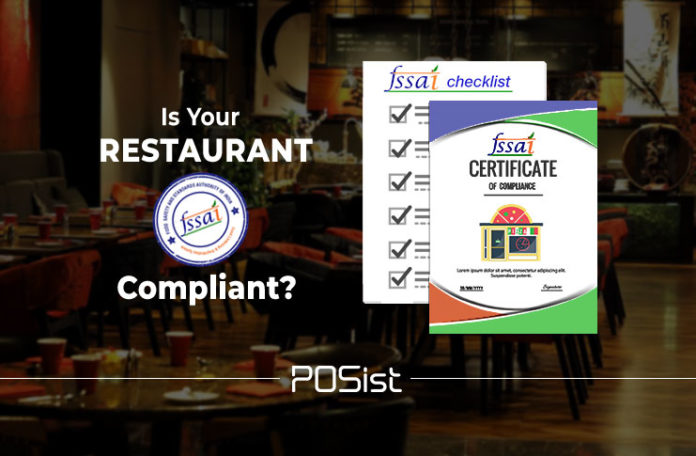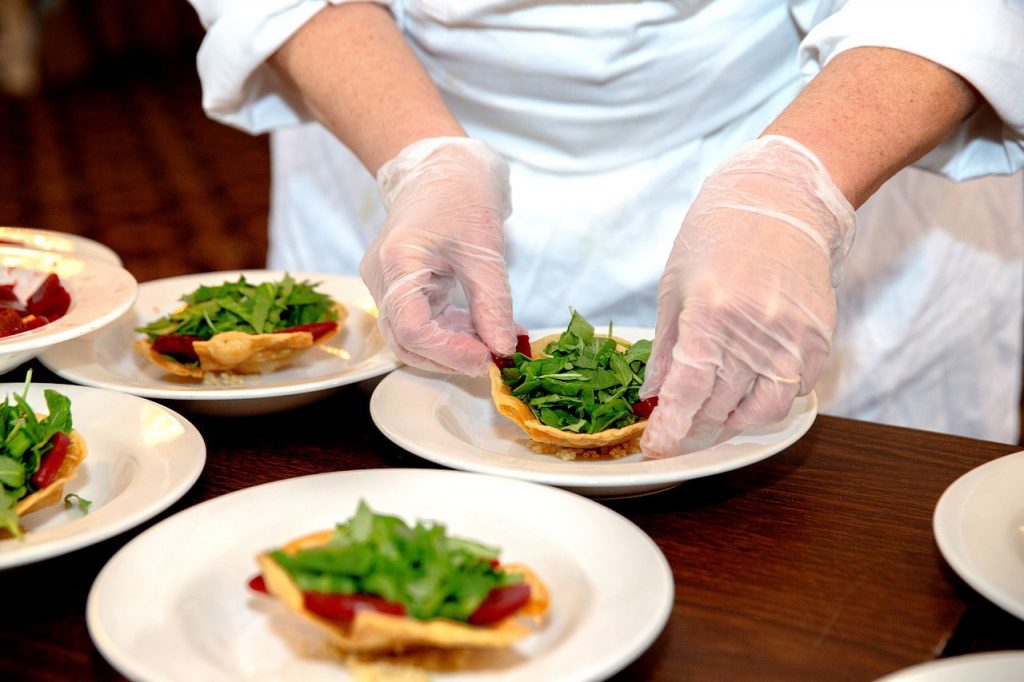FSSAI or Food Safety and Standards Authority of India is an autonomous body under the Ministry of Health and Welfare. There are specific FSSAI guidelines that have been laid out to run a restaurant, and the FSSAI license needs to be procured before starting a restaurant business. Being compliant with guidelines is a must if you want to keep running your restaurant since FSSAI and other such regulatory bodies are becoming extremely vigilant, and not meeting the set criteria will mean having to shut down. To avoid such a situation, here is a list of requirements laid by FSSAI that you must ensure to follow in your restaurant.
Important FSSAI Guidelines For Running a Restaurant
Read on to know what all you need to do to make sure your restaurant follows all FSSAI guidelines.
1. General Requirements
The display of licenses, notices, and certificates is a must. Restaurants Special instructions, if needed, must be there on food being sold. The restaurant must have due knowledge of food handling practices, and the health status of food handlers must be monitored regularly. Depending on the type of food, food safety messages must be shown to make your restaurant compliant with the FSSAI guidelines.
2. Raw Materials
Obtain raw materials from reliable and known dealers. Visible deterioration, off odor, signs of thawing foreign body contamination must be checked before purchasing the item. The use of raw materials must be based on FIFO (First In First Out), FEFO (First Expired First Out), and FMFO (First Manufactured First Out). Also, purchasing the materials must be based on adequate storage facilities so that no accidental contamination or temperature abuse, especially in the case of frozen foods, takes place.
3. Water And Ice
The FSSAI guidelines specifically instruct the restaurants to use safe water, i.e., water free from any contamination, pollutants, or chemical hazards for all its activities, including the use of ice as freezing does not remove contaminants from water. Thus water for drinking, cooking, cleaning, hand washing, and making ice and beverages must be potable and kept away from non-potable water. Water must be stored in closed, clean containers with taps for withdrawal, and these water containers should be regularly emptied, cleaned, and dried at the end of the day’s sale, and water drainage must be maintained appropriately to avoid food contamination.
4. Formulations
FSSAI lays particular guidelines for food with high levels of salt, sugar, acid, or low moisture. Consumers must be kept informed by displaying ingredients that may be possible allergens like milk, egg, fish, nuts, etc. Food must be kept covered and protected after cooking if it must be seasoned with uncooked ingredients; the exposure must be monitored and limited. Sandwiches must be freshly prepared, and it would be preferable if fresh salads or fruit dishes are seasonal.
5. Preparation And Processing
The proper preparation and processing techniques, as laid down by FSSAI, entail that the processing or cooking of raw materials must be enough to eliminate and reduce hazards to acceptable levels, which might have been introduced at the start. The proper preparation method that ensures that there is no re-contamination of food must be followed.
Veg and Non-Veg foods must be kept separate at all costs starting from the stage of raw materials all through the cooking process. There must be no direct or indirect contact between raw and cooked food. Any place that food is coming in contact with must be clean, and frozen foods must be thawed to adequate levels before cooking to ensure enough heat penetration.
Cooking oil must not be re-used, and if fermented foods are being made, then timing should be carefully monitored to avoid the growth of pathogens. In-process ingredients and raw materials should also be safely stored to prevent contamination.
FSSAI Requirements for Processing and Preparation of Fruits and Vegetables
Only fruits and vegetables that have been protected from cross-contamination and have been appropriately conserved must be used after the removal of parts in poor condition. Whole fruits and vegetables must be washed in potable water before use, and uncooked, ready to eat fruits and vegetables must be first disinfected using 50 ppm chlorinated water. Previously cut fruits and vegetables must be kept in clean, covered containers under refrigeration.
FSSAI Requirements for Processing and Preparation of Non-veg Products
Raw meat and processed meat should be kept away from other foods and surfaces to avoid cross-contamination. Hands must be thoroughly washed when switching from one sort of meat to another, and proper cooking of all non-veg foods must be ensured. Anti-bacterial must be used on all surfaces coming in contact with raw meat or poultry, and frozen products must be adequately thawed for enough heat penetration.
6. Transportation, Handling, And Storage Of Prepared Food
FSSAI guidelines state that the vehicle or transportation being used to carry cooked food must be clean and dedicated to this very purpose. In order to prevent microbial proliferation time of delivery should be kept minimal and temperature constant. Veg food must be stored above non-veg food and cooked food above uncooked food on separate racks.
Sealed foods should be stored in a way that the seal stays intact, dry, fermented, and acidified foods must be stored in cool, dry places and food for cold storage must be distributed in small volumes. Only permitted artificial color or flavoring is allowed to be added, and all surplus or thawed food must be thrown away.
7. Personal Hygiene
According to FSSAI, the hygiene and health of all food handlers are essential to food safety. Wearing hazardous materials like jewelry or other physical hazards like bandages or a careless attitude of food handlers or restaurateurs can contaminate food items and be detrimental to the health of the food handlers as well. Employees must never handle food when they are infected.
Clean proper clothing, use of hairnets and gloves must be mandatory, and the use of street shoes when preparing food must be avoided. Washing hands is a must for food handlers, and so there should be a regular supply of clean water, soap, sanitizers, and hand dryers. Food handlers under all circumstances while handling food must NOT smoke or chew tobacco, betel nuts or gums, touch mouth, nose or any other body part with food, spit, sneeze or cough, touch ready to eat food with bare hands, or handle food at money at the same time.
8. Vending Or Selling Units, Equipment, And Utensils
All food equipment must be designed and maintained in such a way that it can be cleaned and sanitized totally to prevent any microbial build-up. Within the FSSAI guidelines, the precautions mentioned include the use of properly designed and constructed equipment/utensils made of non-absorbent food-grade material, utensils for raw foods must be separated from those of cooked food, reusable utensils must be adequately disinfected and single-use disposable items like straws, disposable cups, etc. must not be re-used. Cracked or chipped dishes must be discarded, and personal belongings must be kept away from vending, sale, and preparation areas, which should be at least 30 cm off the ground.
9. Requirements At The Area Of Sale
The point of sale is the last point of the food chain cycle, and assuming that food has safely reached till this guideline given by FSSAI, which includes the protection of this place from dust, wind, rain, intense sun, pests, etc. and its hygiene. The chosen point of sale must be away from all human and animal waste, and disposable gloves must be used only once. Salt, sugar, mustard, etc. to be used by the customer must be provided in a single portion and not go back to the dispenser.
10. Environment And Surroundings
Food must not get contaminated due to an unhygienic environment. Hence, FSSAI precautions state that food preparation and selling areas be clean and dry with a proper ventilation system in an airy atmosphere and not a damp place. There should be no waste collection in areas near food, and no one should be allowed to spit or wash hands, etc. near this area. Toilets must not open directly into food processing, display, or selling areas. Food path and water drainage should be maintained appropriately, and adornments in the establishment must not cater to food contamination.
11. Waste Disposal And Pest Control
Biodegradable, non-biodegradable, liquid, and solid kitchen wastes should be separated by installing different bins, waste must be disposed of as per law, all bins must be covered and regularly cleaned and adequate pest control must be followed.
12. High-Risk Food
Apart from the guidelines mentioned above, there are special guidelines for foods classified as high-risk food items like confectionery, dairy products, chutneys, sauces, raw meat, etc. Special care must be taken in the storage and preparation to avoid cross-contamination, and temperature abuse must be watched out for.
FSSAI is known for being vigilant and taking serious action if and when the guidelines specified by it are not met. Here is the detailed Food Safety Inspection checklist that would help you stay prepared for a sudden inspection.
Make sure that you follow these guidelines to keep running your restaurant business without any legal road bumps!



















Excellent article.